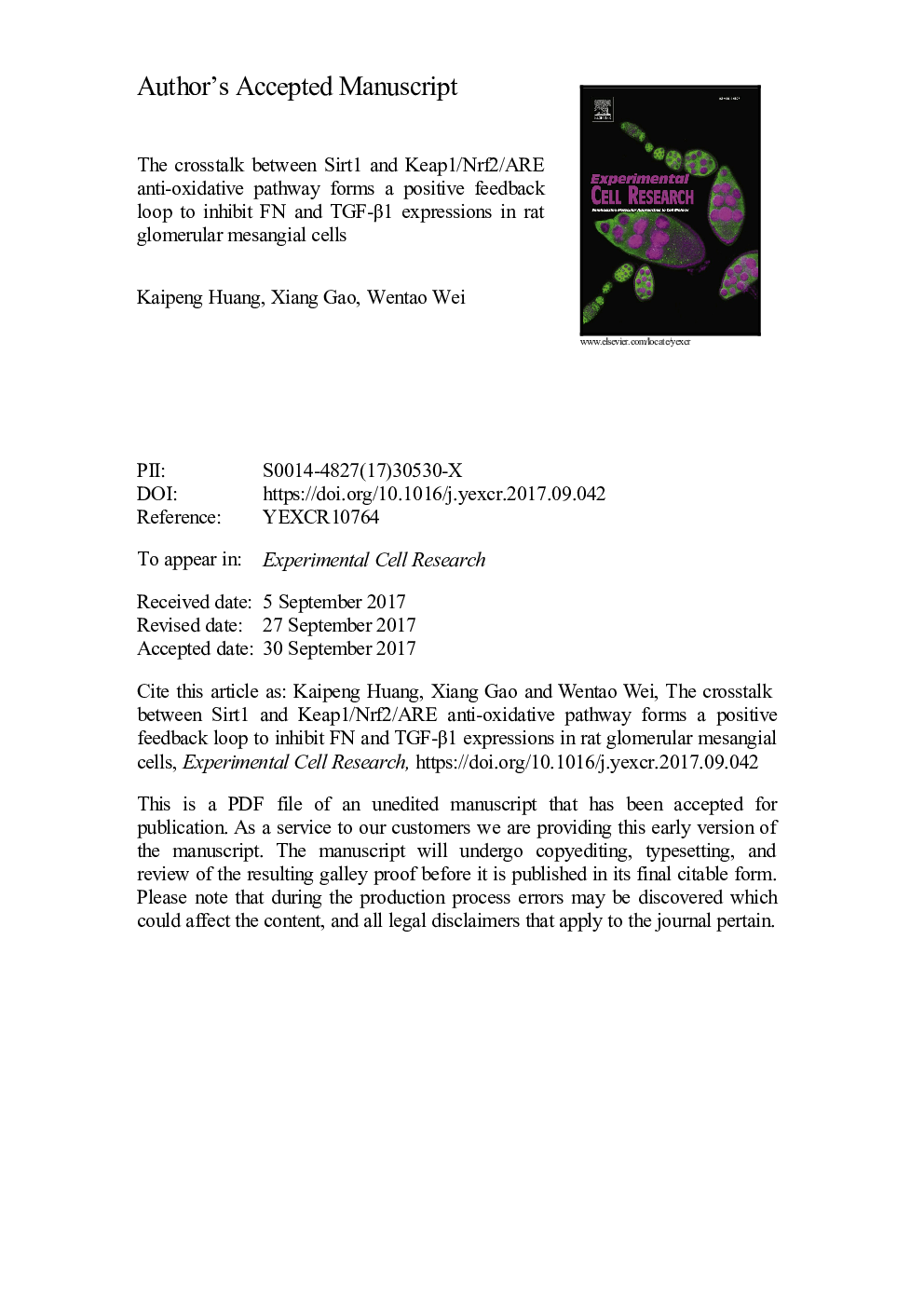| Article ID | Journal | Published Year | Pages | File Type |
|---|---|---|---|---|
| 8451951 | Experimental Cell Research | 2017 | 28 Pages |
Abstract
Oxidative stress aroused by advanced glycation-end products (AGEs) is a culprit in the pathological progression of diabetic nephropathy. Both Sirt1 and the Keap1/Nrf2/ARE anti-oxidative pathway exert crucial inhibitory effects on the development of diabetic nephropathy. Our previous study has confirmed that Sirt1 activation can inhibit the upregulation of fibronectin (FN) and transforming growth factor-β1 (TGF-β1) by promoting Keap1/Nrf2/ARE pathway in glomerular mesangial cells (GMCs) challenged with AGEs. However, the underlying mechanism needs further investigation. Here, we found that concomitant with deacetylating and reducing the ubiquitination levels of Nrf2, Sirt1 significantly enhanced the activity of Keap1/Nrf2/ARE pathway including decreasing Keap1 expression, promoting the nuclear content, ARE-binding ability, and transcriptional activity of Nrf2, augmenting the protein levels of heme oxygenase 1, a target gene of Nrf2, which eventually quenched ROS overproduction and alleviating FN and TGF-β1 accumulation in AGEs-treated GMCs. And depletion of Nrf2 blocked those renoprotective effects of Sirt1. Interestingly, Nrf2 also positively regulated Sirt1 at the protein expression and deacetylase activity levels as evidenced by tert-Butylhydroquinone and specific siRNA targeting Nrf2 to downregulate FN and TGF-β1. In conclusion, the current study basically demonstrated that the crosstalk between Sirt1 and Keap1/Nrf2/ARE anti-oxidative pathway forms a positive feedback loop to inhibit the protein expressions of FN and TGF-β1 in AGEs-treated GMCs.
Keywords
DCFH-DAKeap1/Nrf2/ARE pathwayAdvanced glycation-end products2′, 7′-dichlorofluorescin diacetateGMCstert-butylhydroquinoneAGEsECMHO-1Nrf2Sirt1TBHQTGF-β1BSAkeap1NAD+ROSElectrophoretic mobility shift assaybovine serum albuminsodium dodecyl sulfate-polyacrylamide gel electrophoresisOSSTransforming growth factor-β1ImmunoprecipitationOxidative stressSODglomerular mesangial cellsEMSA یا electrophoretic mobility shift assay Superoxide dismutaseanti-oxidant response elementnuclear factor erythroid 2-related factor 2FibronectinExtracellular matrixDiabetic nephropathyAREheme oxygenase 1Reactive oxygen species
Related Topics
Life Sciences
Biochemistry, Genetics and Molecular Biology
Cancer Research
Authors
Kaipeng Huang, Xiang Gao, Wentao Wei,
